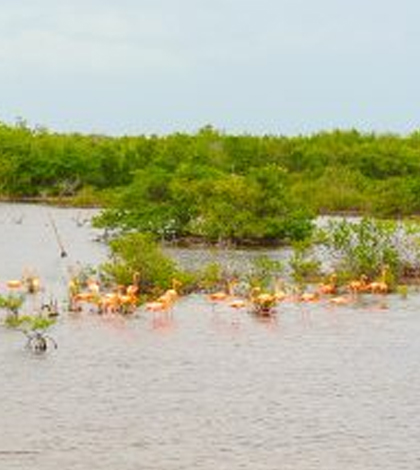Cooperative Research Begins On Mangroves In Cuba

Flamingoes graze near the mangroves in Cuba. (Credit: Zapata National Park)
Scientists from the University of Alabama have embarked on the first collaborative research between Cuba and the United States since the weakening of the 1960 trade embargo, according to a release from the university. The project is looking to map parts of two of Cuba’s national parks, specifically wetland areas full of mangroves.
The two parks — Parque Nacional Ciénaga de Zapata and Jardines de la Reina Marine Park — are both expected to have more visitors with the waning embargo, many of them anglers looking for sportfish like tarpon and bonefish. But before they do, scientists want to get a good idea of what the mangrove forests look like. From there, it will be possible to assess the impacts that the visitors have on the regions in the future.
Achieving that will require extensive mapping using images from NASA Landsat satellites. Scientists will be able to determine forest cover changes over the past 20 years. All of the data gathered so far, during trips in October 2015 and March 2016, have been shared with Cuban park officials. Another research trip is planned for fall 2016.
Top image: Flamingoes graze near the mangroves in Cuba. (Credit: Zapata National Park)




0 comments